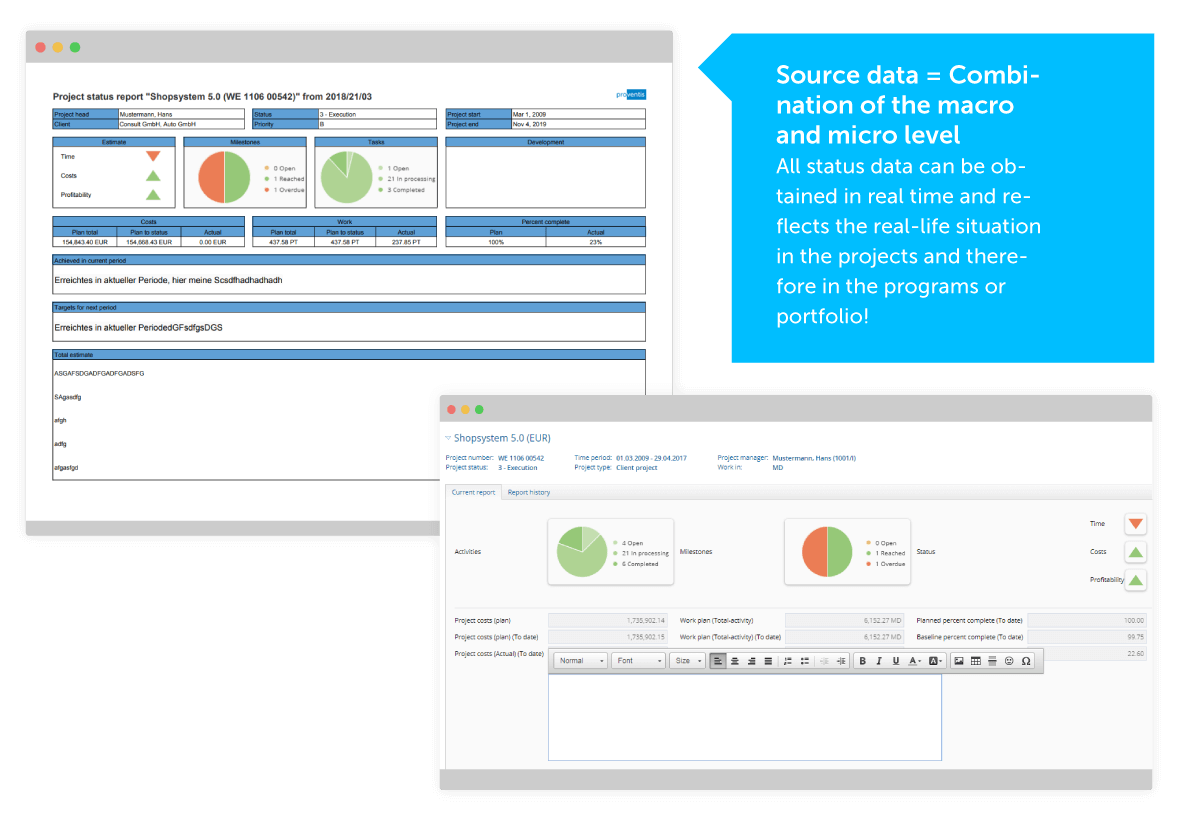How to steer your project portfolio to a successful digital future in the changing world of banking
This is a paper to implementing solid Project Portfolio Management (PPM) in 4 steps, which will give you the answer to this key question: Which projects contribute most to the successful future of our business model?
1 Introduction: Evaluating projects in times of digital change
Few other business sectors are currently experiencing such major changes as the banking sector. To survive in the face of competition, banks are currently placing great emphasis on innovative approaches. In order to meet the different expectations of customers in times of digital change, agile approaches are needed that enable an early proof of concept and conclusions to be drawn from the market reaction.
With a growing project portfolio, however, there is a danger that good ideas soon run out of steam due to a lack of resources. Even worse, strategically important projects are often delayed because the necessary resources are tied up in less promising projects. To avoid such undesirable developments, banks need a stable tool for evaluating and weighting projects.
This is a guide to implementing solid Project Portfolio Management (PPM) in 4 steps, which will give you the answer to this key question:
Which projects contribute most to the successful future of our business model?
As an objective evaluation and monitoring system, PPM enables a clear statement to be made about which projects contribute to what extent to the achievement of set strategic goals. At the same time, you create a solid communication basis for the allocation of resources to projects and the correct strategic alignment of your project portfolio.
2 Replace random good luck with targeted project successes
Dramatic changes in competition and user behaviour are unsettling the banking sector. What measures can be taken to create the right conditions to deal with current developments appropriately? In the hope of finding an answer to the questions posed by digital change, a variety of project ideas are initiated.
2.1. How do we position ourselves for the future in the course of the digital transformation?
Setting up multiple complex projects can only be successful if it can be ensured that resources are used correctly across departments. Otherwise, cooperation will not result in much more than promising PowerPoint slides. Manpower, constructive framework conditions and professional competence are often lacking for successful implementation. And it is precisely these initial conditions that form the basis of successful projects.
So, how is it possible to reverse the pyramid and determine project success not primarily through luck, but through a functioning project management framework?
The answer is project portfolio management. It is a tool that allows you to assign projects to a specific strategic direction. This approach is particularly relevant for companies that are subject to disruptive markets.
With Project Portfolio Management (PPM), you establish a system, which answers three questions that determine your company's success, from the outset:
a) Which of our currently implemented projects contribute to our strategic corporate goals?
b) How can we ensure the clear alignment of our project portfolio?
c) How do we ensure that we prioritize our projects correctly?
In this guide you will learn how to find the answers to these questions and how to ensure that your project success is determined by a solid project management foundation even before the start of the project.
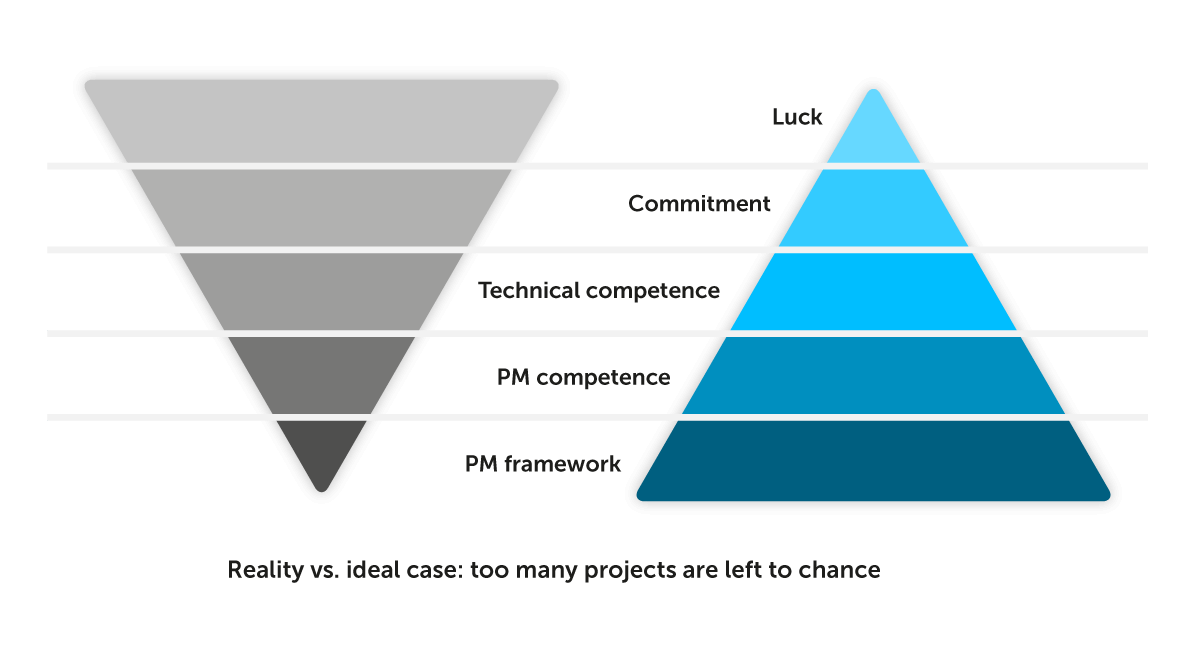
3 The 4 areas for action for successful Project portfolio management
The aim of PPM is to be able to assess and justify at any time which projects your department is steering in the right strategic direction and which it is not. With projects represented transparently, the focus is not just placed one-dimensionally on costs. Above all, the question of whether and to what extent a project contributes to which strategic goal determines its positioning in the portfolio overview.
The condition for this representation is a comparable framework for the evaluation and presentation of ongoing projects. At the same time, they create the basis for any objectively communicated distribution of time, money and manpower to individual projects.
The 4 areas of action on the way to this uniform representation are as follows:
a) Make resource utilization transparent
b) Allocate responsibilities, make them visible & test them
c) Weight projects on the basis of objective criteria
d) Control project progress at micro and macro level
These 4 areas of action are not necessarily mutually dependent. You can either develop them one after the other as step-by-step instructions or, assuming sufficient manpower, introduce PPM in your organizational unit by developing the 4 areas in parallel.
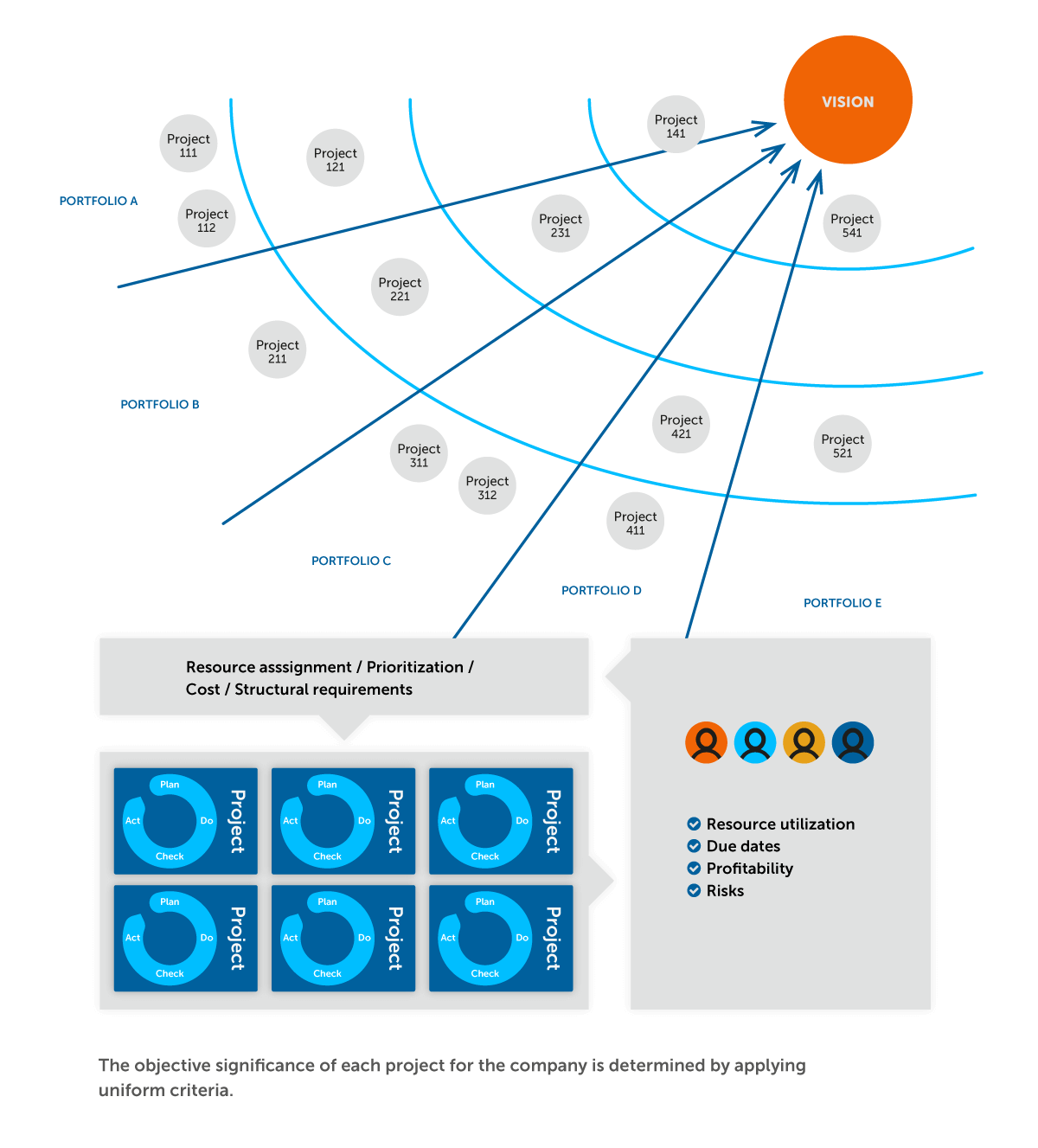
4 Area of action 1: Present resource utilization in a comprehensible way
One of the most common problems in multi-project management is the accurate planning of the resources used in coordination with the entire project landscape. The reason why plan and actual figures often diverge is obvious: while projects and their requirements usually originate from the line, the actual implementation takes place in a cross-departmental project environment.
This makes it all the more important to outline the key requirements for the successful implementation of a project before it begins, and to be able to decide whether the implementation is feasible at all.
In the first step, it is therefore advisable to draw up an inventory and present all existing projects with the respective capacities used by the departments involved. Each additionally implemented project should be able to be classified in this list.
For further information on the transparent use of resources, we recommend our "Resource use" white paper.
A matter of definition - What distinguishes a program from a portfolio?
Program
A program encompasses interconnected projects with the same objective. Programs are subject to an end date by which all related projects must be implemented.
For example, the introduction of the euro required numerous projects aimed at a smooth changeover. On 1st January 2002, the day on which the new currency was introduced in Germany, the projects within this program had to be successfully completed.
Portfolio
A project portfolio is a collection of projects and programs that contribute to the long-term development of a company. Projects and programs within a portfolio can have different specific goals.
Example: Digitization and all the associated changes require a wide variety of projects and measures in different fields of action. In their entirety, a wide variety of programs pursue the strategic goal of meeting the market changes resulting from digital transformation. There is neither a deadline for this nor a specific common goal that all projects are working towards.
5 Area of action 2: Assigning, displaying and checking responsibilities
PPM enables you to consistently implement important strategic decisions in your company through the correct and targeted use of resources and financial means. This gives rise to a basic condition: at least one person must have a complete overview of the project portfolio and be able to decide which projects promise success.
This person is the project portfolio manager. An indispensable position to which three important functions are assigned, which no other project participant can take on:
a) The overall objective assessment and prioritisation of projects combined with the decision on how to allocate the available resources.
b) The monitoring of the project portfolio and countermeasures if it becomes clear that the current use of resources does not lead in the agreed strategic direction.
c) Long-term monitoring of the projects pursued according to uniform objective standards.
When appointing the project portfolio manager, conflicts of responsibility should be avoided as far as possible. It is essential to distinguish between three roles:
- The project manager, who focuses on the implementation of one or more projects
- The program manager, who is responsible for ensuring that the relevant deadline is met for multiple high-priority projects
- The portfolio manager, who looks at the project landscape with a focus on strategic alignment from an overall perspective.
Portfolio managers should maintain their overall view in order to provide helpful information to those involved in the program and project.
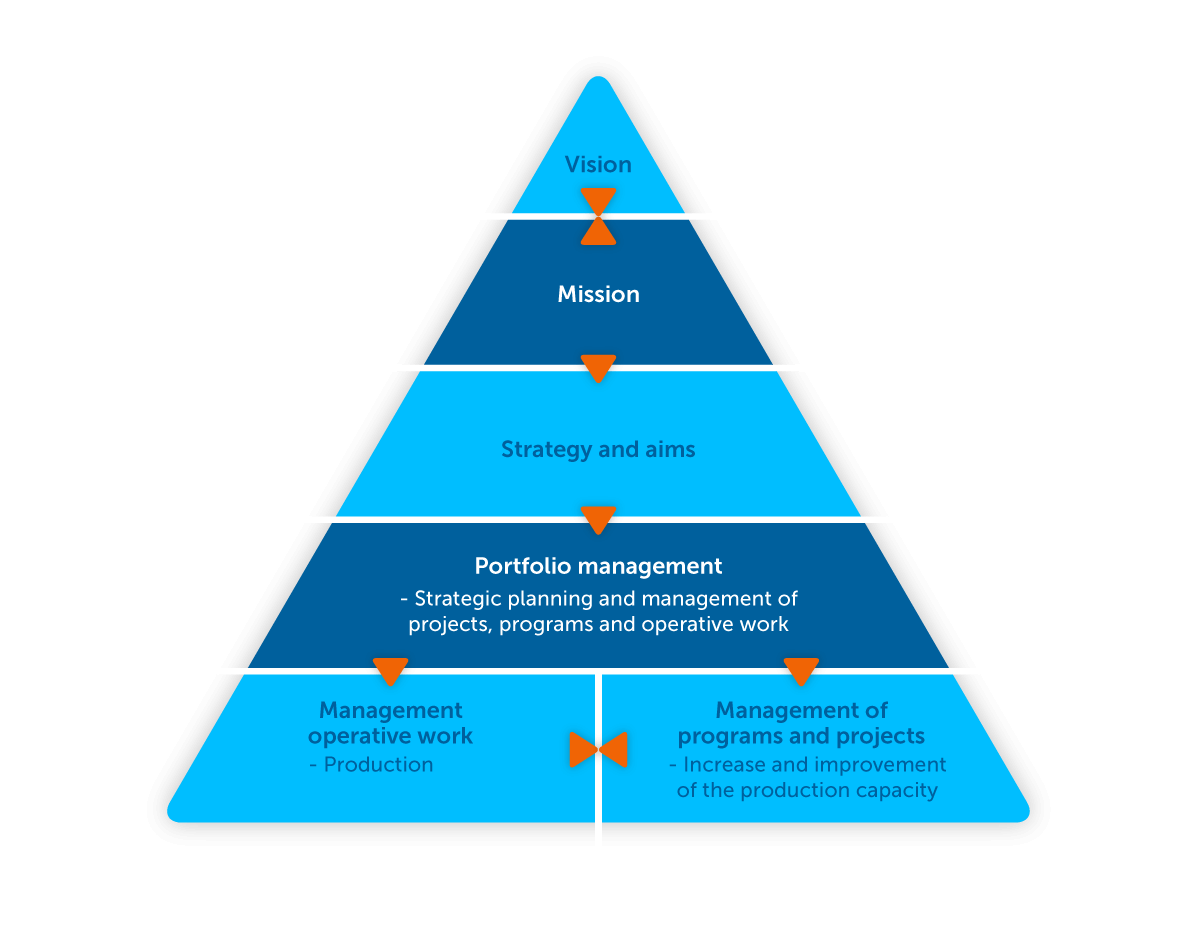
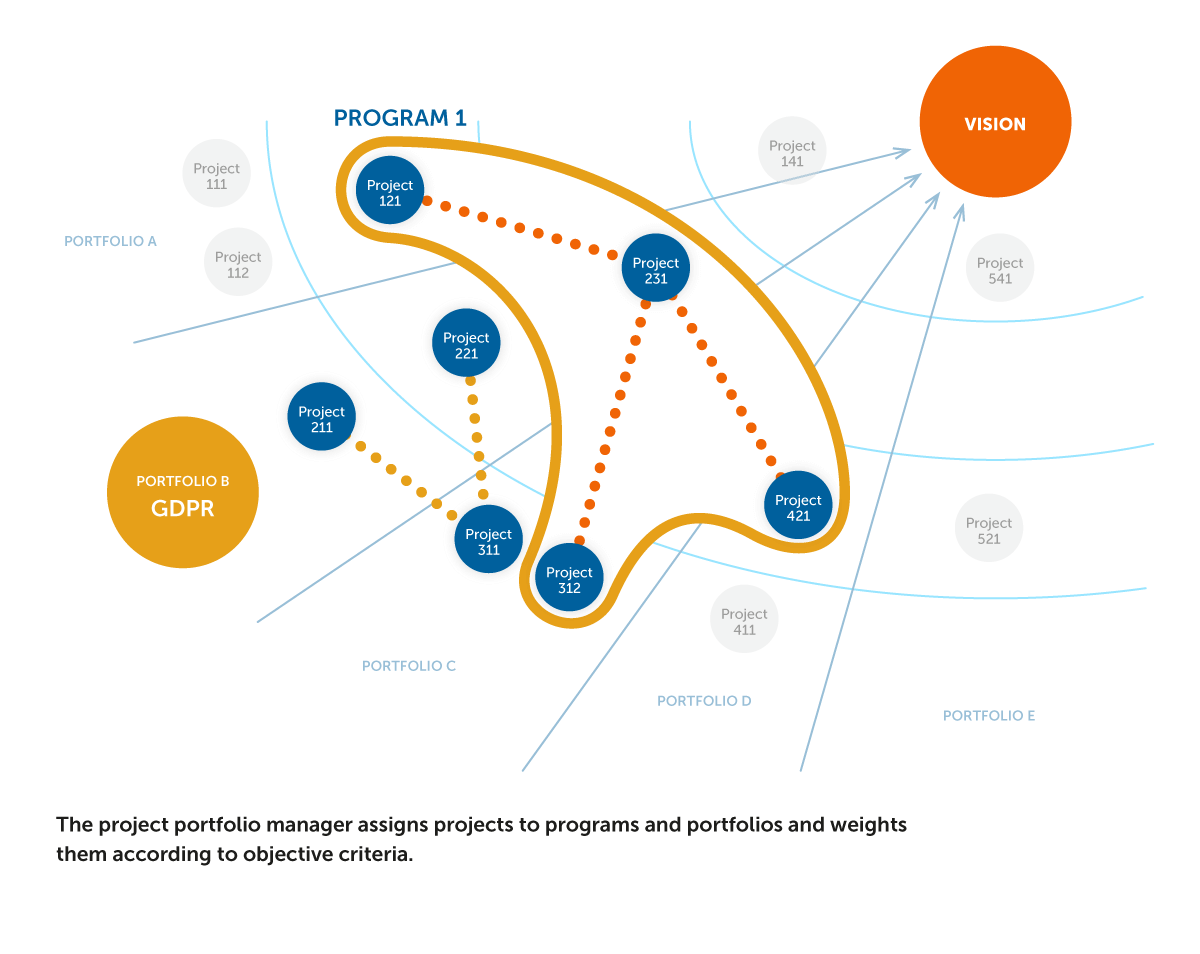
6 Area of action 3: Objective project evaluations with scoring
The prioritized and objectively evaluated presentation of all current projects is the basis for a strategically intelligent and comprehensible allocation of resources. The project portfolio manager is also responsible for establishing and adhering to this basis.
In order to ensure both the success of the PPM and the acceptance and understanding of all employees involved, the significance of the projects and program should be determined by fixed and clear criteria. This ensures that all participants can understand why one portfolio, project or program is strategically more important than others, and is endowed with more resources accordingly.
6.1 Create objective clarity with the scoring catalogue
What is therefore needed to create objective clarity in the evaluation of projects is a binding, uniformly valid scheme. This is a specific catalogue of weighted technical questions derived from the strategic objectives of your bank. Depending on your strategic orientation, these questions provide information, for example, on the extent to which a project is driving corporate development, generating growth or minimising entrepreneurial risks.
If each project starts with a response to this catalogue, the result is a natural ranking that decides which projects can be implemented under which resources. Conversely, even before the project begins, it is decided which projects do not appear sufficiently promising to invest manpower and money in them.
Practical tip: Always stick to the results of your scoring model. Avoid implementing low-rated projects just because you personally would have rated the score higher. Instead, change the weighting or the categories of your questionnaire, and apply these changes to all existing projects. This is the only way to maintain objectivity and transparency.
7 Area of action 4: Certainty at micro and macro level
In order to achieve long-term success with functioning PPM, the 4 areas of action should be implemented consistently and the project landscape reliably monitored.
Monitoring gives you the assurance that your organizational unit is pursuing the desired strategic direction with its project landscape. You also reduce the controlling effort of individual project participants.
At the macro level, the project portfolio manager has an overview of relevant topics, requirements and phases of all projects implemented within the organizational unit. This results in the necessary budget and resources for specific time periods. It is important to understand and communicate that this information is not a detailed plan, but a rough outline of the most important key data on a time axis. This gives all participants a feeling for which employee capacities must flow into a concrete project at which point in time.
Why hybrid project management?
The problem:
Project managers are often overwhelmed by the complexity of their projects: plans are either drawn up in too much detail and no longer revised in the course of the project, or projects are not sufficiently planned. So, there are no reference values against which the success of a project can be measured.
The solution:
By separating the planning levels, higher-level controlling and small-scale implementation tasks are assigned to various stakeholders in such a way that they can be more easily integrated into day-to-day work and thus lead to more continuity in monitoring.
The implementation:
Like their implementation, projects are monitored at different levels of detail by the project portfolio manager and the project manager.
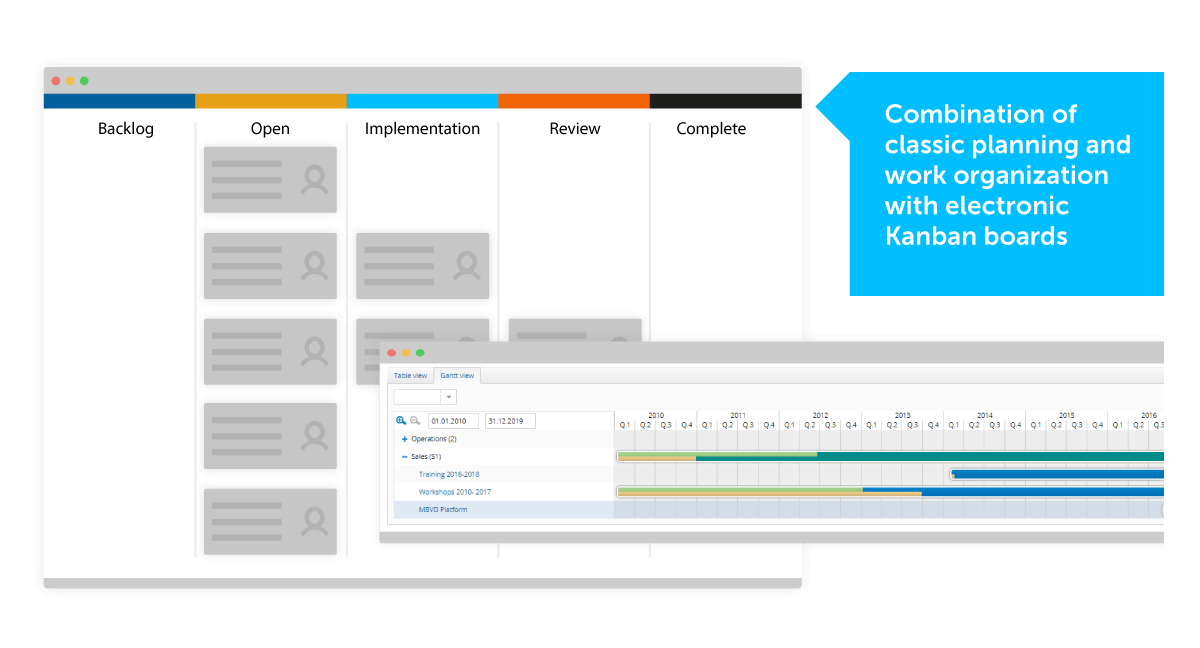
8 Outlook - using generated data as a strategic advantage
The digital transformation is and will remain a major challenge for the banking sector. PPM can be used to meet this challenge strategically.
To assess the development of your project portfolio and visualize it clearly based on existing figures, evaluation tools such as Blue Ant should be used. They enable you to compress the generated data into comprehensible information. With evaluations (such as status reports or key figures), you receive sufficient information without the planning basis having to be adjusted daily.
